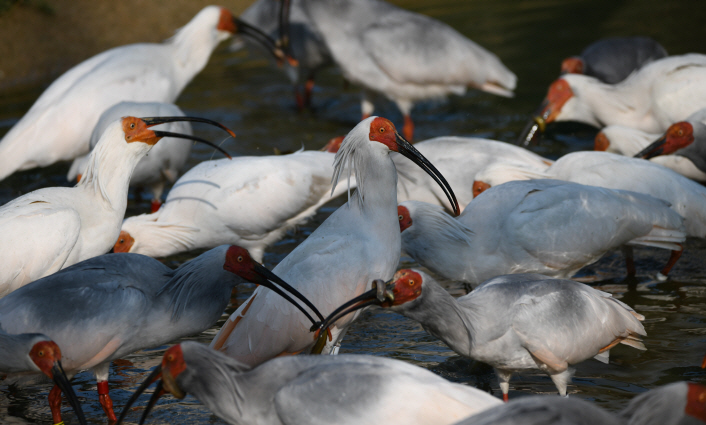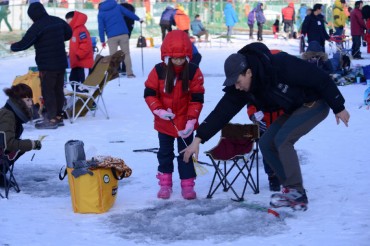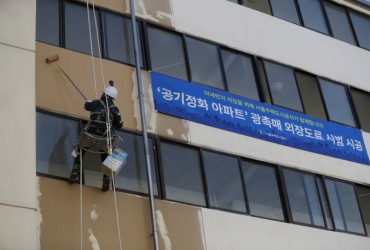
Crested ibises at the Crested Ibis Restoration Center in Changnyeong, southeastern South Korea. (image: Changnyeong County Office)
CHANGNYEONG, May 22 (Korea Bizwire) — Crested ibises, an endangered bird, were reintroduced to the wild in South Korea on Wednesday, 40 years after the species went extinct on the Korean Peninsula.
Forty crested ibises, which were bred in captivity at the Crested Ibis Restoration Center, were released into the wild of Upo Wetland in Changnyeong of South Gyeongsang Province, 350 kilometers southeast of Seoul.
The Ministry of Environment and local governments organized a release ceremony for the birds at the wetland, just in time for World Biodiversity Day and World Wetlands Day, which falls on May 22 every year in South Korea.
Crested ibises, designated as the nation’s Natural Monument No. 198, used to be common nationwide but disappeared from the Korean Peninsula after being last seen in the Demilitarized Zone, which separates the two Koreas, in 1979.
South Korea has been trying to reintroduce the species to the wild since 2008, when a pair of Chinese-born crested ibises were donated by China. In 2013, Chinese President Xi Jinping donated two male crested ibises to South Korea. Around that time, the Crested Ibis Restoration Center was established near Upo Wetland, a complex of natural wetlands.
The center now has 363 crested ibises in captive breeding.
The environment ministry and Changnyeong County said only 40 crested ibises have been selected for release into the wild to mark their reintroduction here. Their gender and age ratios were also taken into consideration to help maximize their survival rate in the wild, they explained.
Ahead of the release, the authorities have prepared feeding and breeding grounds for crested ibises at Upo Wetland and its surrounding areas to help their successful adaptation.
GPS transmitters were also attached to the departing crested ibises for a closer monitoring of their daily movements, they said.
(Yonhap)






